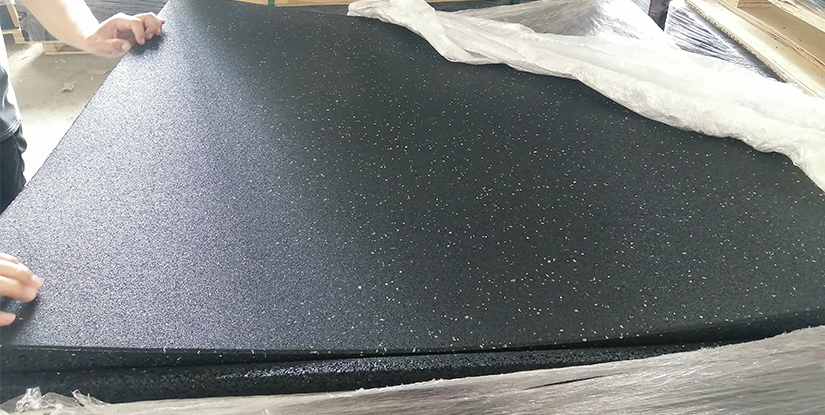Best Workout Mats for Carpet | Anti-Slip, High-Density Options

Overview
Choosing the right workout mat for carpeted floors requires attention to material, thickness, and anti-slip performance. A carpet can reduce stability, absorb sweat, and affect the durability of a mat. This guide provides a professional framework to select, install, and maintain a mat that performs well on carpet while protecting both your equipment and flooring.
Key Features to Look For
- Material composition: High-density EVA, TPE, natural rubber, or closed-cell NBR resist compression and provide consistent support on carpet.
- Thickness and density: Thicker mats (6–12 mm) offer cushioning for joints, but thickness alone is not enough—density ensures the mat won’t bottom out on plush carpet.
- Anti-slip surface: Textured tops and bottoms or rubberized coatings reduce movement. Look for mats with directional textures and proprietary grippers for carpet use.
- Edge design: Beveled edges reduce trip risk and prevent curling. Reinforced edges maintain shape under repeated use.
- Size and coverage: Ensure the mat covers the workout area and any equipment contact points (e.g., treadmill feet). Larger mats provide better load distribution on carpet.
Mat Types and Their Suitability for Carpet
- Yoga/fitness mats (TPE, PVC): Lightweight and portable, best for low-impact exercises. On plush carpet they may shift unless backed by anti-slip material.
- High-density rubber mats: Excellent for weight training and HIIT; resist indentation and sliding. Natural rubber offers superior grip but may have odor initially.
- Interlocking floor tiles: Provide a stable platform across a larger area. Tiles distribute weight and prevent equipment legs from sinking into carpet.
- Commercial-grade gym rolls: Heavy, durable, and designed to minimize movement on different floor types, including low- to medium-pile carpets.
Installation and Anti-Slip Solutions
Carpet complicates grip because fibers compress and create uneven contact. These installation techniques reduce slippage and improve stability:
- Use a silicone- or rubber-backed mat designed for carpet to increase friction at the interface.
- Place a thin, non-slip underlay or rug pad beneath the mat; choose one made for carpet to avoid discoloration or adhesive residue.
- For fixed equipment, utilize anti-slip pads or neoprene furniture protectors under feet to prevent migration and distribute load.
- Remove loose debris and vacuum the carpet before placing the mat to maximize contact area.
Maintenance and Longevity
Proper care extends mat life and keeps performance consistent.
- Clean regularly with mild soap and water; avoid harsh chemicals that degrade foam or rubber.
- Air out new mats to eliminate manufacturing odors before placing directly on carpet.
- Rotate the mat periodically to distribute wear evenly, especially under heavy equipment loads.
- Inspect edges and textured surfaces for wear; replace when grip or cushioning is compromised.
Performance Considerations by Activity
Match mat attributes to your primary exercises:
- Yoga and Pilates: Moderate thickness (4–6 mm) with superior top-surface grip prevents slipping during poses.
- Bodyweight and HIIT: Durable, high-density mats with good shock absorption and a grippy top layer are essential.
- Weight training: Thick, dense rubber or interlocking tiles that resist plate impact and equipment feet sinking into carpet.
Buying Guide: Questions to Ask
- What is the mattress carpet pile? Low, medium, or high pile affects stability.
- Is the mat intended for equipment or bodyweight workouts?
- Does the manufacturer specify compatibility with carpeted surfaces?
- Are warranty and return policies clear, and do they cover premature compression or delamination?
Summary
Selecting a workout mat for carpet boils down to material, density, and anti-slip design. High-density rubber or specialty TPE mats with textured, rubberized bottoms or a dedicated underlay deliver the best results. Consider the intended activity, carpet pile, and maintenance needs to ensure a long-lasting, safe training surface.
FAQs
- Q: Can any mat be used on carpet?
A: Not all—choose mats with rubberized or textured bottoms and sufficient density for stability. - Q: Are interlocking tiles better than single mats?
A: For equipment and heavy loads, yes; tiles distribute weight and reduce sinking. - Q: Will a thick mat always prevent sinking on plush carpet?
A: Thickness helps, but density matters more; soft foam may still compress. - Q: How do I stop a mat from sliding on carpet?
A: Use a non-slip underlay, rubber-backed mat, or anti-slip tape designed for carpets. - Q: Is natural rubber good for carpeted floors?
A: Yes—natural rubber grips well but can have a stronger odor initially. - Q: Can adhesives damage my carpet?A: Some adhesives can; opt for non-permanent rug pads or grippers rated for carpet.
- Q: How often should I replace a mat used on carpet?A: Replace when cushioning or grip degrades—typically 2–5 years depending on use.
- Q: Are budget mats okay for carpet?A: Budget mats may lack density and slip resistance; invest in quality for frequent use.
- Q: Should I vacuum under the mat?A: Yes—cleaning prevents moisture buildup and maintains grip.

